A 2D Lithospheric Magnetic Anomaly Field over Egypt Using Gradient Data of Swarm Mission
Abstract
:1. Introduction
2. Data Set and Methodology
2.1. Data Set and Selection Criterion
- 1)
- Local nighttime data ().
- 2)
- Kp 1.
- 3)
- The interplanetary magnetic field (IMF) within .
- 4)
- The disturbance storm time index within −20 < Dst < 20 daily values.
- 5)
- The regional data observed within [] latitude and [] longitudes with observational error < 0.3 nT.
2.2. Modeling Techniques
3. Results and Discussions
4. Conclusions
Author Contributions
Funding
Data Availability Statement
Acknowledgments
Conflicts of Interest
References
- Cawood, P.A.; Kroner, A.; Pisarevsky, S. Precambrian plate tectonics: Criteria and evidence. GSA Today 2006, 16, 4. [Google Scholar] [CrossRef] [Green Version]
- Mandea, M.; Korte, M. Geomagnetic Observations and Models; Springer: Berlin/Heidelberg, Germany, 2010; Volume 5. [Google Scholar]
- Milligan, P.; Petkovic, P.; Drummond, B. Potential-field datasets for the Australian region: Their significance in mapping basement architecture. Spec. Pap. Geol. Soc. Am. 2003, 372, 129–140. [Google Scholar]
- Hemant, K.; Maus, S. Geological modeling of the new CHAMP magnetic anomaly maps using a geographical information system technique. J. Geophys. Res. Solid Earth 2005, 110, 1–23. [Google Scholar] [CrossRef]
- Maus, S. An ellipsoidal harmonic representation of Earth’s lithospheric magnetic field to degree and order 720. Geochem. Geophys. Geosystems 2010, 11. [Google Scholar] [CrossRef] [Green Version]
- Olsen, N.; Friis-Christensen, E.; Floberghagen, R.; Alken, P.; Beggan, C.D.; Chulliat, A.; Doornbos, E.; Da Encarnação, J.T.; Hamilton, B.; Hulot, G. The Swarm satellite constellation application and research facility (SCARF) and Swarm data products. Earth Planets Space 2013, 65, 1189–1200. [Google Scholar] [CrossRef]
- Bloxham, J.; Jackson, A. Time-dependent mapping of the magnetic field at the core-mantle boundary. J. Geophys. Res. Solid Earth 1992, 97, 19537–19563. [Google Scholar] [CrossRef]
- Jackson, A.; Jonkers, A.R.; Walker, M.R. Four centuries of geomagnetic secular variation from historical records. Philos. Trans. R. Soc. London. Ser. A Math. Phys. Eng. Sci. 2000, 358, 957–990. [Google Scholar] [CrossRef]
- Sabaka, T.J.; Olsen, N.; Purucker, M.E. Extending comprehensive models of the Earth’s magnetic field with Ørsted and CHAMP data. Geophys. J. Int. 2004, 159, 521–547. [Google Scholar] [CrossRef]
- Finlay, C.C.; Kloss, C.; Olsen, N.; Hammer, M.D.; Tøffner-Clausen, L.; Grayver, A.; Kuvshinov, A. The CHAOS-7 geomagnetic field model and observed changes in the South Atlantic Anomaly. Earth Planets Space 2020, 72, 1–31. [Google Scholar] [CrossRef]
- Thébault, E.; Lesur, V.; Kauristie, K.; Shore, R. Magnetic Field Data Correction in Space for Modelling the Lithospheric Magnetic Field. Space Sci. Rev. 2017, 206, 191–223. [Google Scholar] [CrossRef]
- Sabaka, T.J.; Olsen, N.; Langel, R.A. A comprehensive model of the quiet-time, near-Earth magnetic field: Phase 3. Geophys. J. Int. 2002, 151, 32–68. [Google Scholar] [CrossRef]
- Sabaka, T.J.; Tøffner-Clausen, L.; Olsen, N.; Finlay, C.C. CM6: A comprehensive geomagnetic field model derived from both CHAMP and Swarm satellite observations. Earth Planets Space 2020, 72, 1–24. [Google Scholar] [CrossRef]
- Reigber, C.; Lühr, H.; Schwintzer, P. CHAMP mission status. Adv. Space Res. 2002, 30, 129–134. [Google Scholar] [CrossRef]
- Olsen, N.; Lühr, H.; Finlay, C.C.; Sabaka, T.J.; Michaelis, I.; Rauberg, J.; Tøffner-Clausen, L. The CHAOS-4 geomagnetic field model. Geophys. J. Int. 2014, 197, 815–827. [Google Scholar] [CrossRef]
- Russell, J.; Shiells, G.; Kerridge, D. Reduction of Well-Bore Positional Uncertainty Through Application of a New Geomagnetic In-Field Referencing Technique. In Proceedings of the SPE Annual Technical Conference and Exhibition, Dallas, TX, USA, October 1995. [Google Scholar]
- Olsen, N.; Ravat, D.; Finlay, C.C.; Kother, L.K. LCS-1: A high-resolution global model of the lithospheric magnetic field derived from CHAMP and Swarm satellite observations. Geophys. J. Int. 2017, 211, 1461–1477. [Google Scholar] [CrossRef] [Green Version]
- Alken, P.; Maus, S.; Chulliat, A.; Manoj, C. NOAA/NGDC candidate models for the 12th generation International Geomagnetic Reference Field. Earth Planets Space 2015, 67, 1–9. [Google Scholar] [CrossRef] [Green Version]
- De Santis, A.; Battelli, O.; Kerridge, D. Spherical cap harmonic analysis applied to regional field modelling for Italy. J. Geomagn. Geoelectr. 1990, 42, 1019–1036. [Google Scholar] [CrossRef]
- Alldredge, L. Rectangular harmonic analysis applied to the geomagnetic field. J. Geophys. Res. Solid Earth 1981, 86, 3021–3026. [Google Scholar] [CrossRef]
- Nakagawa, I.; Yukutake, T. Rectangular harmonic analyses of geomagnetic anomalies derived from MAGSAT data over the area of the Japanese Islands. J. Geomagn. Geoelectr. 1985, 37, 957–977. [Google Scholar] [CrossRef] [Green Version]
- Haines, G. Computer programs for spherical cap harmonic analysis of potential and general fields. Comput. Geosci. 1988, 14, 413–447. [Google Scholar] [CrossRef]
- Thébault, E.; Schott, J.; Mandea, M.; Hoffbeck, J. A new proposal for spherical cap harmonic modelling. Geophys. J. Int. 2004, 159, 83–103. [Google Scholar] [CrossRef]
- Jiang, T.; Li, J.; Dang, Y.; Zhang, C.; Wang, Z.; Ke, B. Regional gravity field modeling based on rectangular harmonic analysis. Sci. China Earth Sci. 2014, 57, 1637–1644. [Google Scholar] [CrossRef]
- Malin, S.; Düzgit, Z.; Baydemir, N. Rectangular harmonic analysis revisited. J. Geophys. Res. Solid Earth 1996, 101, 28205–28209. [Google Scholar] [CrossRef]
- Düzgit, Z.; Baydemir, N.; Malin, S. Rectangular polynomial analysis of the regional geomagnetic field. Geophys. J. Int. 1997, 128, 737–743. [Google Scholar] [CrossRef] [Green Version]
- Fathy, A.; Ghamry, E. A two-dimensional lithospheric magnetic anomaly field model of Egypt using the measurements from swarm satellites. Geod. Geodyn. 2021, 12, 229–238. [Google Scholar] [CrossRef]
- Olsen, N.; Haagmans, R.; Sabaka, T.J.; Kuvshinov, A.; Maus, S.; Purucker, M.E.; Rother, M.; Lesur, V.; Mandea, M. The Swarm End-to-End mission simulator study: A demonstration of separating the various contributions to Earth’s magnetic field using synthetic data. Earth Planets Space 2006, 58, 359–370. [Google Scholar] [CrossRef] [Green Version]
- Friis-Christensen, E.; Lühr, H.; Hulot, G. Swarm: A constellation to study the Earth’s magnetic field. Earth Planets Space 2006, 58, 351–358. [Google Scholar] [CrossRef] [Green Version]
- Alken, P. Observations and modeling of the ionospheric gravity and diamagnetic current systems from CHAMP and Swarm measurements. J. Geophys. Res. Space Phys. 2016, 121, 589–601. [Google Scholar] [CrossRef] [Green Version]
- Zhang, J.; Yang, X.; Yan, J.; Wu, X. An analysis of the characteristics of crustal magnetic anomaly in China based on CHAMP satellite data. Geod. Geodyn. 2018, 9, 328–333. [Google Scholar] [CrossRef]
- Holme, R.; Bloxham, J. The magnetic fields of Uranus and Neptune: Methods and models. J. Geophys. Res. Planets 1996, 101, 2177–2200. [Google Scholar] [CrossRef] [Green Version]
- Gubbins, D.; Bloxham, J. Geomagnetic field analysis—III. Magnetic fields on the core—mantle boundary. Geophys. J. Int. 1985, 80, 695–713. [Google Scholar] [CrossRef]
- Kotsiaros, S.; Finlay, C.; Olsen, N. Use of along-track magnetic field differences in lithospheric field modelling. Geophys. J. Int. 2015, 200, 880–889. [Google Scholar] [CrossRef]
- Morschhauser, A.; Lesur, V.; Grott, M. A spherical harmonic model of the lithospheric magnetic field of Mars. J. Geophys. Res. Planets 2014, 119, 1162–1188. [Google Scholar] [CrossRef] [Green Version]
- Kotsiaros, S.; Olsen, N. The geomagnetic field gradient tensor. GEM-Int. J. Geomath. 2012, 3, 297–314. [Google Scholar] [CrossRef]
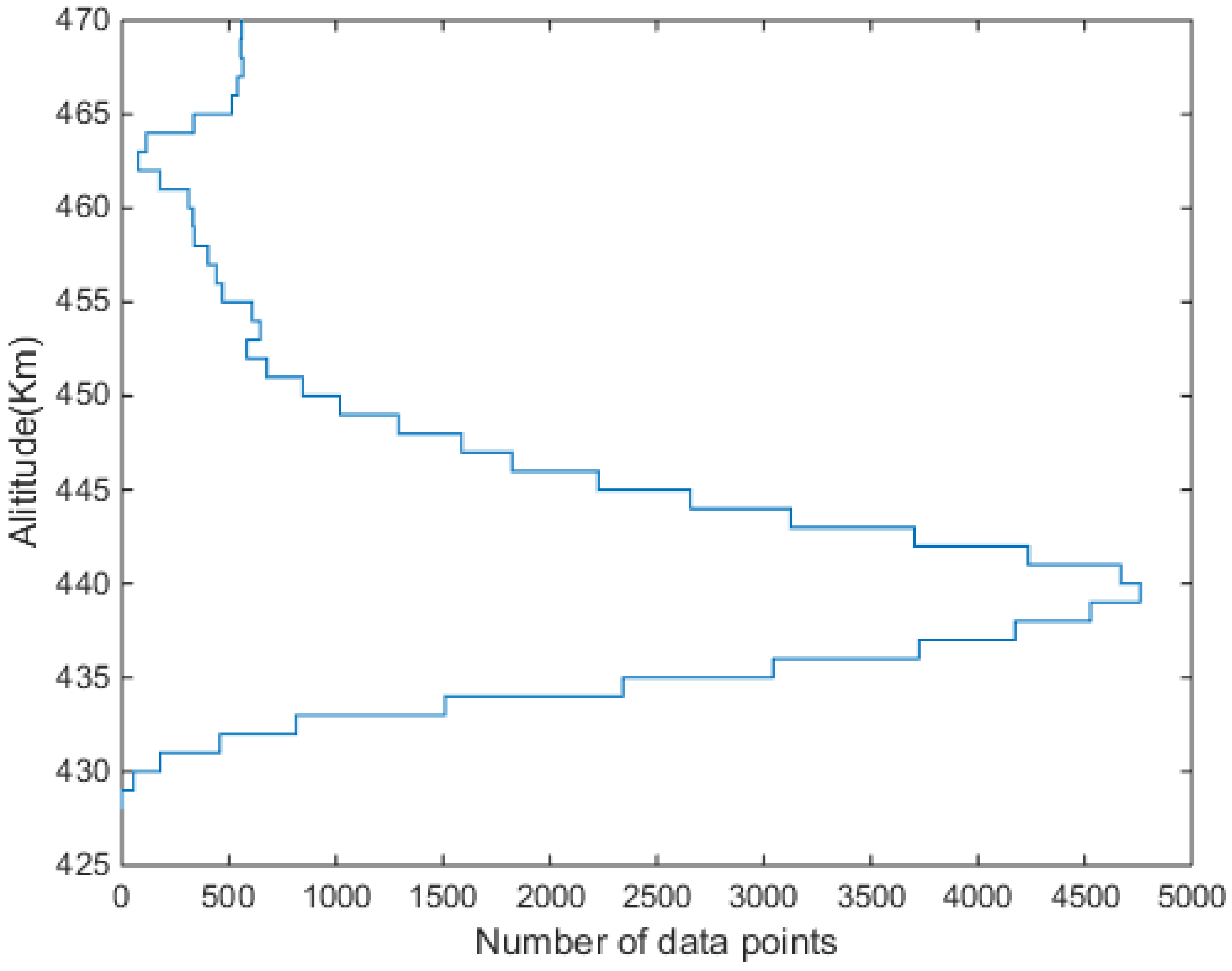
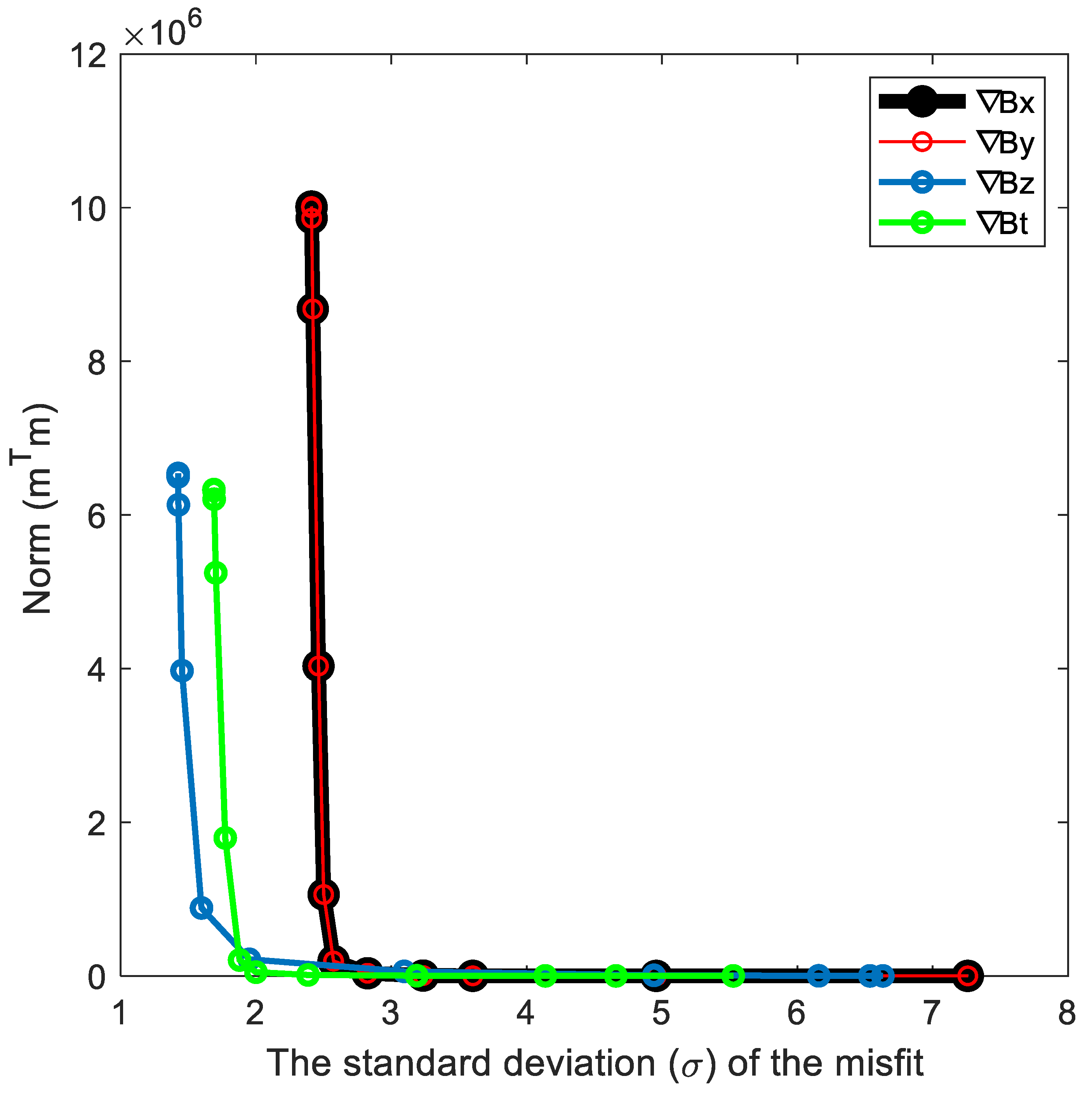
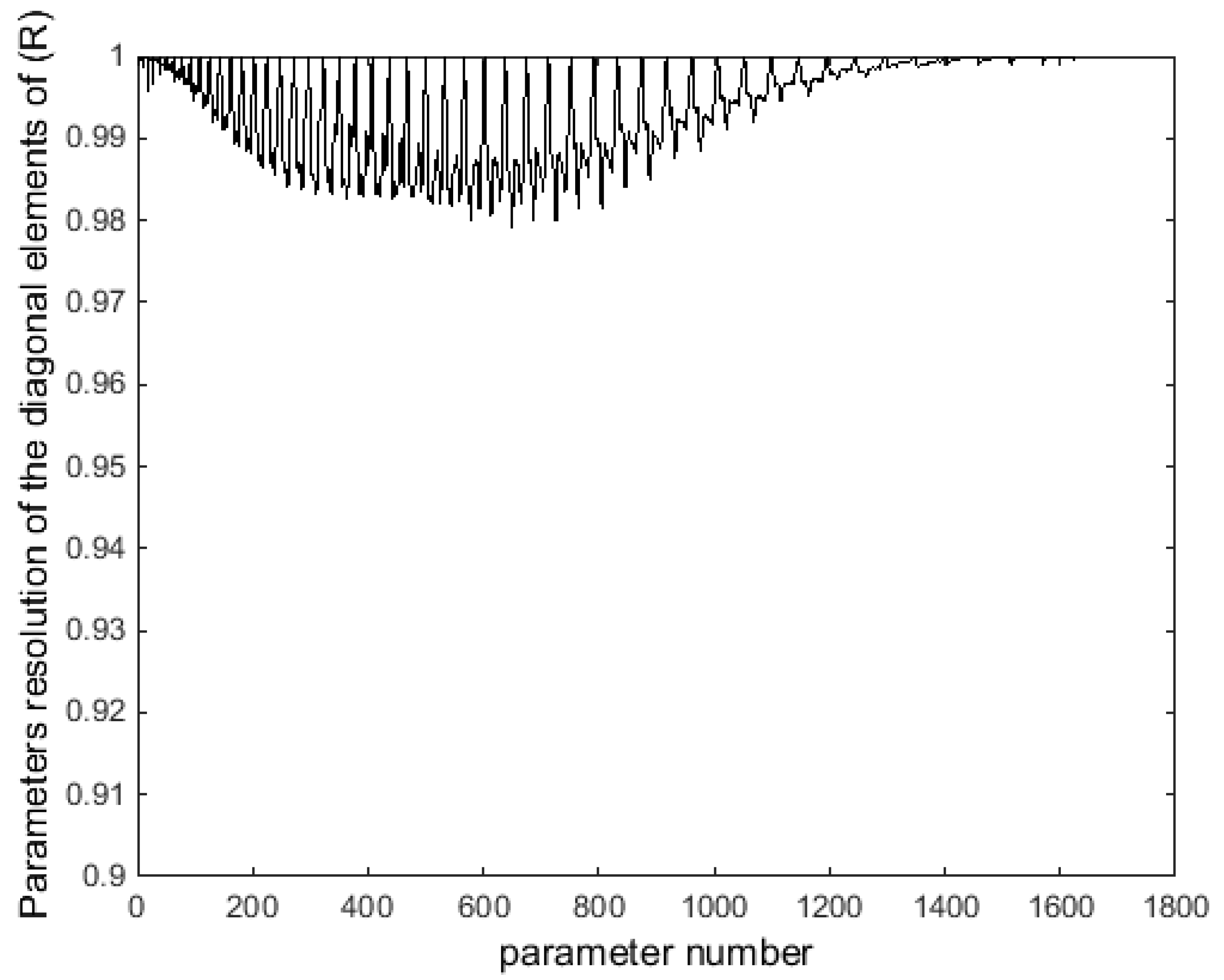
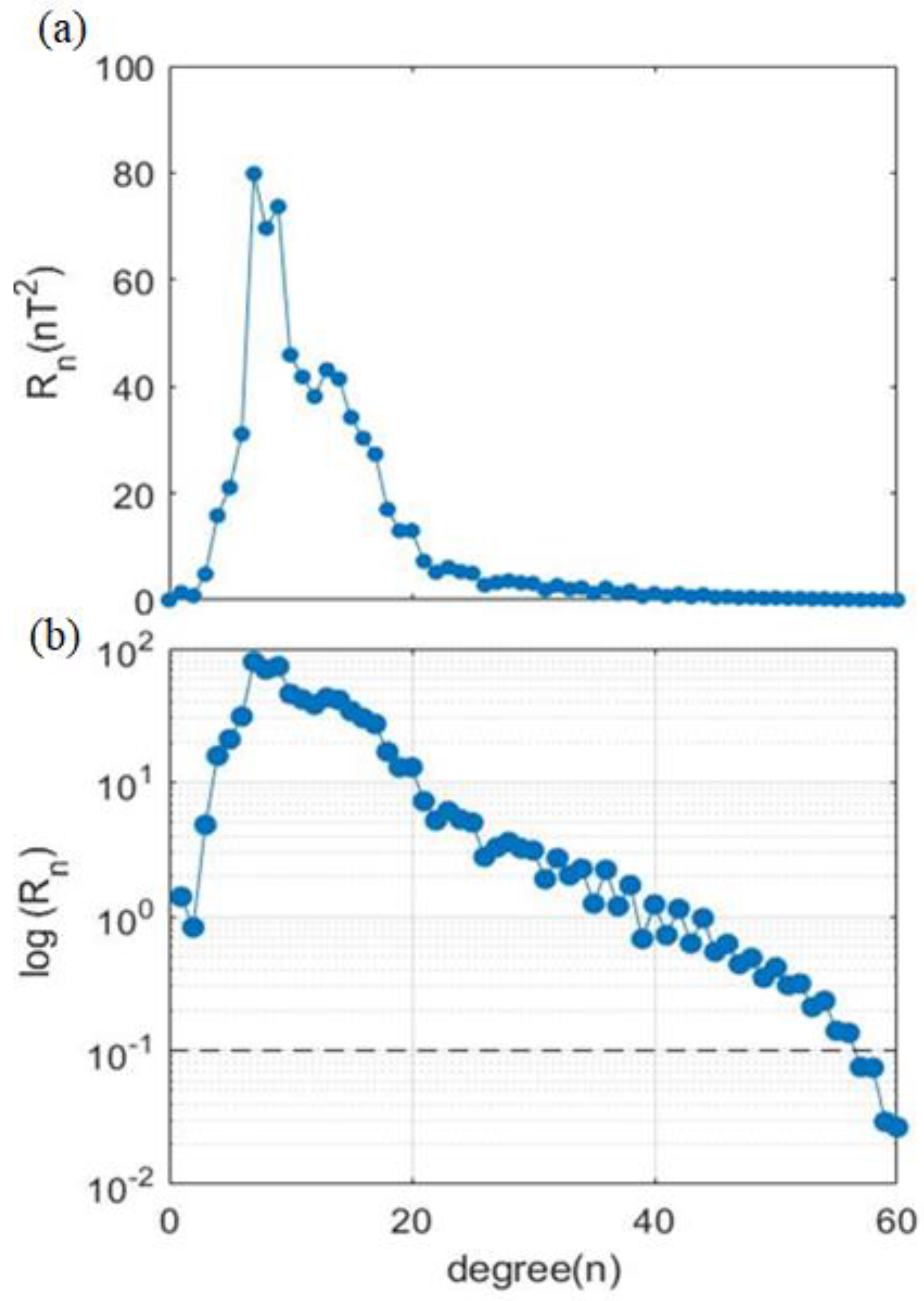
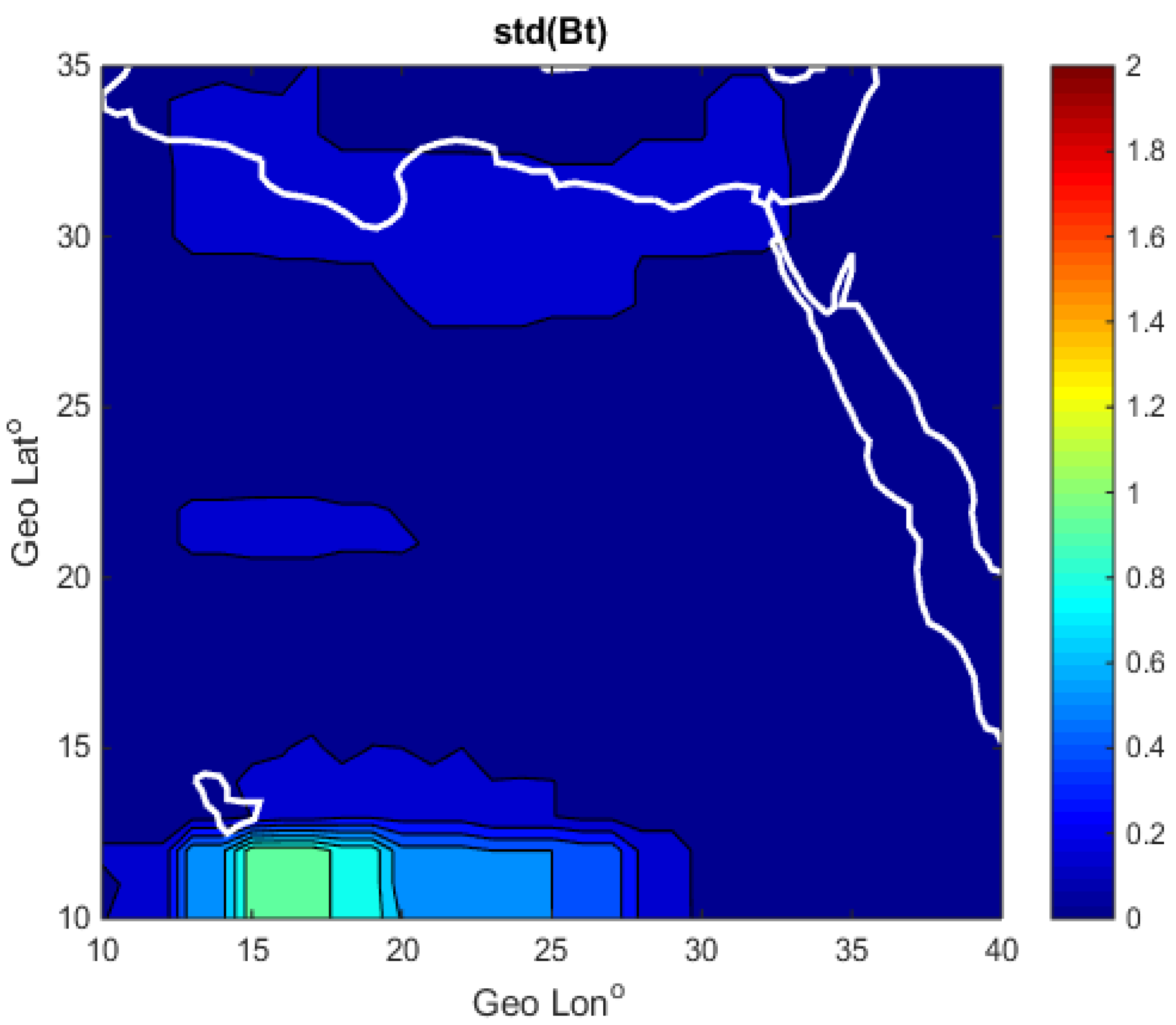

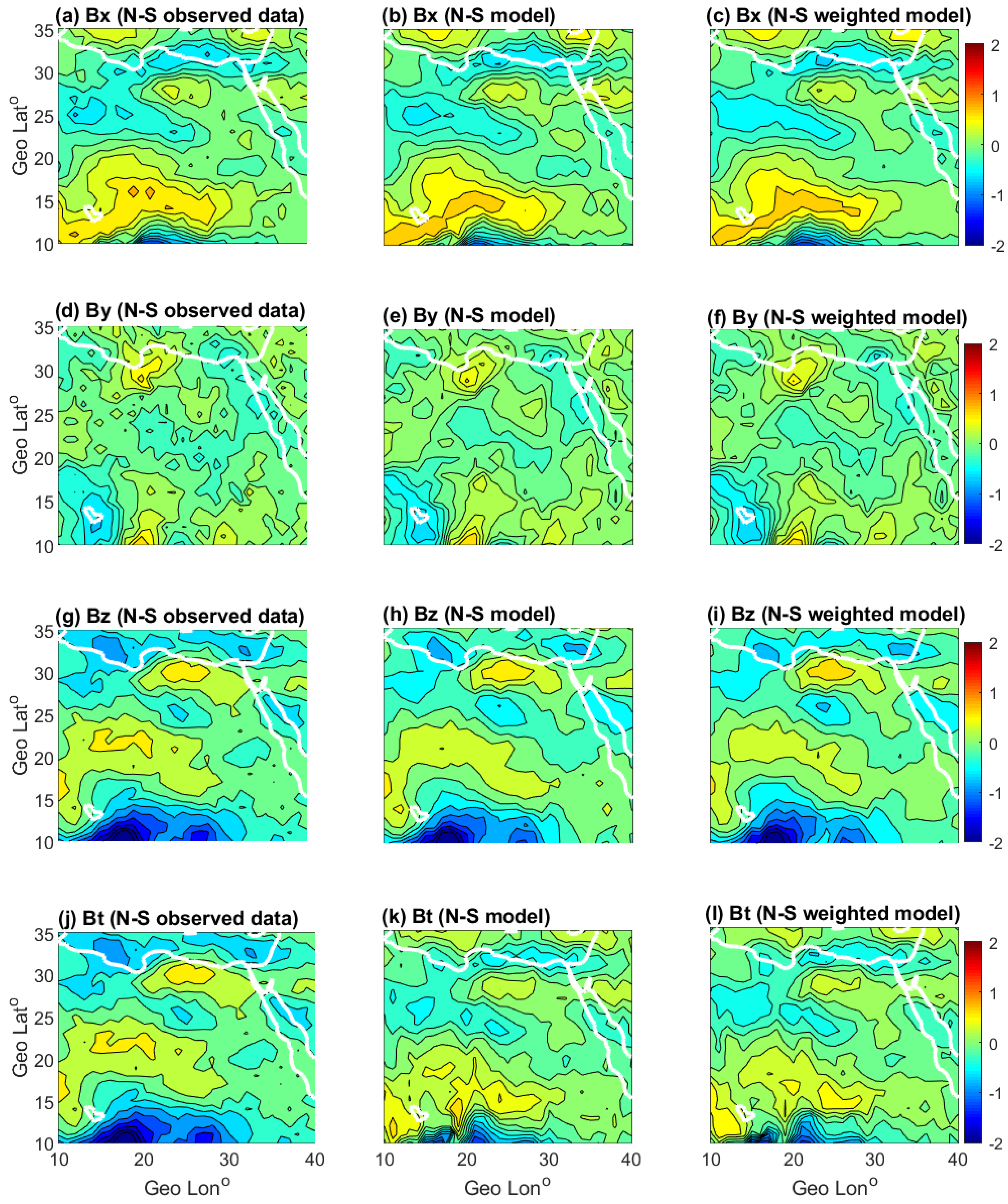
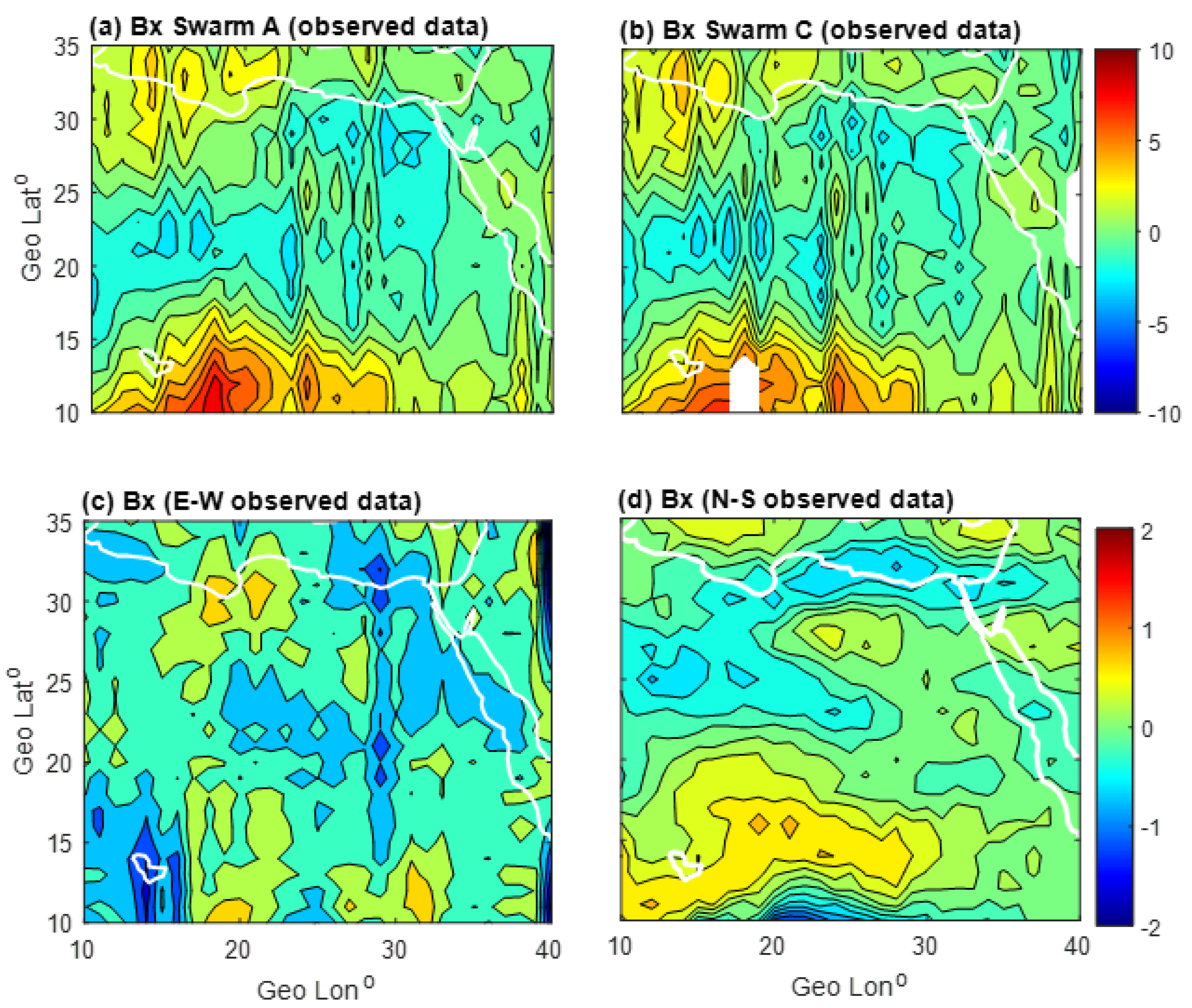
Publisher’s Note: MDPI stays neutral with regard to jurisdictional claims in published maps and institutional affiliations. |
© 2022 by the authors. Licensee MDPI, Basel, Switzerland. This article is an open access article distributed under the terms and conditions of the Creative Commons Attribution (CC BY) license (https://creativecommons.org/licenses/by/4.0/).
Share and Cite
Abdellatif, A.; Ghamry, E.; Sobh, M.; Fathy, A. A 2D Lithospheric Magnetic Anomaly Field over Egypt Using Gradient Data of Swarm Mission. Universe 2022, 8, 530. https://doi.org/10.3390/universe8100530
Abdellatif A, Ghamry E, Sobh M, Fathy A. A 2D Lithospheric Magnetic Anomaly Field over Egypt Using Gradient Data of Swarm Mission. Universe. 2022; 8(10):530. https://doi.org/10.3390/universe8100530
Chicago/Turabian StyleAbdellatif, Asmaa, Essam Ghamry, Mohamed Sobh, and Adel Fathy. 2022. "A 2D Lithospheric Magnetic Anomaly Field over Egypt Using Gradient Data of Swarm Mission" Universe 8, no. 10: 530. https://doi.org/10.3390/universe8100530




